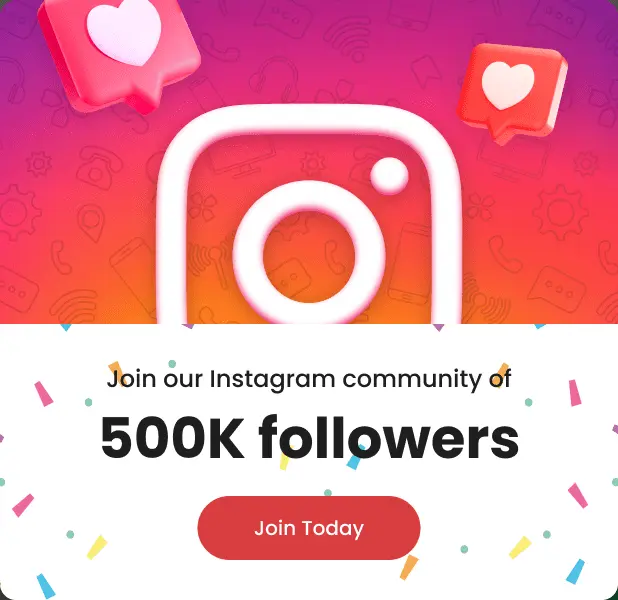In today’s interconnected world, Domain Name System (DNS) plays a critical role in translating domain names into IP addresses, enabling us to access websites and other online services. However, encountering a DNS server not responding error can disrupt our online experience.
In this blog post, we will explore the causes of this issue and provide step-by-step solutions to get your DNS server up and running smoothly. Whether you are a tech enthusiast or an IT professional, this guide is designed to help you troubleshoot and resolve DNS server not responding issues effectively.
- What is a DNS error?
- What does the “DNS Server Not Responding” Error mean?
- How to fix DNS Server Not Responding
- Solution 1: Use a Different Web Browser
- Solution 2: Try Accessing a Web Site with a Different Device
- Solution 3: Restart your Router
- Solution 4: Clear the DNS Cache
- Solution 5: Disable Internet Protocol Version 6
- Solution 6: Temporarily deactivate your firewall
- Solution 7: Update the Network Adapter Driver
- Solution 8: Disabling All Network Connections
- Solution 9: Restart your Computer in Safe Mode
- How to Preventive Measures for the Future
- How to Set DNS Server Manually On Windows
- How to Set DNS Server Manually On Mac
What is a DNS error?
A DNS error occurs when your computer or device is unable to establish a connection with the DNS server. This can result in failed website access, slow internet speeds, or complete network disconnection. Understanding the implications of a DNS error is crucial in addressing the issue promptly.
What does the “DNS Server Not Responding” Error mean?
The “DNS Server Not Responding” error message indicates that your device is unable to communicate with the DNS server. This can be caused by various factors, such as network connectivity problems, DNS server configuration errors, or firewall and antivirus interference. Identifying the root cause is essential for implementing the appropriate solution.
Common Causes of DNS Server Not Responding Issues
- Network Connectivity Problems: Issues with your internet connection, router, or network cables can lead to DNS server not responding errors.
- DNS Server Configuration Errors: Incorrect DNS server settings or misconfigured network adapters can disrupt communication with the DNS server.
- Firewall or Antivirus Interference: Overly restrictive firewall settings or antivirus software may block DNS requests, resulting in the server not responding error.
How to fix DNS Server Not Responding
So as you now know, what are the possible reasons for the “DNS server isn’t responding” messages, here are a few fixes for the DNS server not responding error.
Solution 1: Use a Different Web Browser
Using a different web browser to fix the “DNS server not responding” error is a simple but effective troubleshooting step. If your default browser is unable to resolve the domain name of the website you are trying to access, trying a different browser may work.
This is because different web browsers use different DNS servers. If your ISP’s DNS servers are down or overloaded, using a different browser may be able to connect to a different DNS server that is working.
To try using a different web browser to fix the “DNS server not responding” error, simply open a different browser and try accessing the website again. If you are able to access the website in the different browser, then the problem is likely with your default browser.
You can try updating your default browser to the latest version, clearing your browser’s cache and cookies, or resetting your browser’s settings to see if that fixes the problem. If you are still unable to access the website in your default browser, you may need to use a different browser on a regular basis.
Here are some popular web browsers that you can try:
- Google Chrome
- Mozilla Firefox
- Microsoft Edge
- Opera
- Safari
Solution 2: Try Accessing a Web Site with a Different Device
Yes, trying to access a website with a different device is a good way to troubleshoot the “DNS server not responding” error. If you are able to access the website on a different device, then it is likely that the problem is with your DNS settings or your network connection on the original device.
Here are some steps you can follow:
- Connect the different device to the same network as the original device.
- Try to access the website on the different device.
- If you are able to access the website on the different device, then the problem is likely with your DNS settings or your network connection on the original device.
Solution 3: Restart your Router
Restarting your router is one of the simplest and most effective ways to fix the “DNS server not responding” error. This is because restarting your router will clear any temporary glitches or errors that may be causing the problem.
To restart your router, simply unplug it from the power outlet for a few seconds, and then plug it back in. Once your router has restarted, wait a few minutes for it to fully boot up, and then try connecting to the internet again.
Solution 4: Clear the DNS Cache
To clear the DNS cache on your computer, you can use the following steps:
How to Clear the DNS Cache On Windows:
- Open a command prompt.
- Type the following command:
ipconfig /flushdns
- Press Enter.
You should see a message that says “Successfully flushed the DNS Resolver Cache.”
How to Clear the DNS Cache On Mac
- Open a Terminal window.
- Type the following command:
sudo dscacheutil -flushcache
- Press Enter.
You will be prompted to enter your password.
You should see a message that says “Cache flushed. To disable the flush cache feature, set the domainname to ‘no’.”
Once you have cleared the DNS cache, you should restart your computer for the changes to take effect.
Clearing the DNS cache can help to fix DNS server not responding errors by removing any outdated or corrupted DNS records from your computer’s memory. It is a simple and effective troubleshooting step that you can try if you are having problems with your internet connection.
Please note that clearing the DNS cache may cause a brief disruption to your internet connection. However, this should only be temporary and your connection should be restored within a few seconds.
Solution 5: Disable Internet Protocol Version 6
How to Disable Internet Protocol On Windows:
- Open the Control Panel.
- Click on “Network and Internet.”
- Click on “Network and Sharing Center.”
- Click on “Change adapter settings.”
- Right-click on the adapter that you are using to connect to the internet and select “Properties.”
- Uncheck the box next to “Internet Protocol Version 6 (TCP/IPv6).”
- Click “OK” and “Close.”
How to Disable Internet Protocol On Mac:
- Open System Preferences.
- Click on “Network.”
- Select the adapter that you are using to connect to the internet and click on “Advanced.”
- Click on the “TCP/IP” tab.
- Uncheck the box next to “Configure IPv6.”
- Click “OK” and “Close.”
Once you have disabled IPv6, you will need to restart your computer for the changes to take effect.
Solution 6: Temporarily deactivate your firewall
How to Deactivate firewall on Windows
- Open the Control Panel.
- Click on “System and Security.”
- Click on “Windows Defender Firewall.”
- Click on “Turn Windows Defender Firewall on or off.”
- Select the “Turn off Windows Defender Firewall (not recommended)” option for both public and private networks.
- Click “OK.”
To temporarily disable your antivirus software on Windows, you will need to consult the documentation for your specific antivirus program.
How to Deactivate firewall on Mac
- Open System Preferences.
- Click on “Security & Privacy.”
- Click on the “Firewall” tab.
- Click the lock icon in the bottom left corner of the window to make changes.
- Uncheck the box next to “Turn on Firewall.”
- Click the lock icon again to prevent further changes.
Your firewall will now be deactivated. To reactivate it, simply follow the steps above and check the box next to “Turn on Firewall.”
Important: It is important to note that deactivating your firewall can make your Mac more vulnerable to attack. It is recommended to only deactivate your firewall temporarily and to reactivate it as soon as you are finished troubleshooting the DNS problem.
Solution 7: Update the Network Adapter Driver
- Open the Device Manager. You can do this by pressing the Windows key and R key at the same time, typing “devmgmt.msc,” and pressing Enter.
- Expand the Network adapters section.
- Right-click on your network adapter and select “Update driver.”
- Select “Search automatically for drivers.”
- Windows will now search for and install the latest drivers for your network adapter.
- Once the drivers have been installed, restart your computer.
Solution 8: Disabling All Network Connections
- Open the Control Panel.
- Click on “Network and Internet.”
- Click on “Network and Sharing Center.”
- Click on “Change adapter settings.”
- Right-click on each network connection that you want to disable and select “Disable.”
- Leave enabled the network connection that you are using to access the internet.
- Open the Control Panel.
- Click on “Network and Internet.”
- Click on “Network and Sharing Center.”
- Click on “Change adapter settings.”
- Right-click on each network connection that you want to disable and select “Disable.”
- Leave enabled the network connection that you are using to access the internet.
Once you have disabled all network connections except the connection you are using to access the internet, try accessing the website or online service that you were having problems with. If you are now able to access the website or online service, then the problem was likely being caused by one of the disabled network connections.
To re-enable a network connection, simply right-click on it and select “Enable.”
Important: Disabling all network connections except the connection you are using to access the internet can prevent you from accessing other network resources, such as shared files and printers. It is important to only do this temporarily and to re-enable all network connections as soon as you are finished troubleshooting the DNS problem.
Solution 9: Restart your Computer in Safe Mode
Restarting your computer in Safe Mode can help to fix the “DNS server not responding” error by starting your computer with a minimal set of drivers and services. This can help to identify and resolve any conflicts that may be causing the DNS problem.
How to restart Windows in Safe Mode
- Restart your computer.
- As soon as your computer starts to restart, press and hold the F8 key.
- On the Advanced Boot Options screen, use the arrow keys to select Safe Mode with Networking and press Enter.
How to restart Mac in Safe Mode
- Restart your Mac.
- As soon as your Mac starts to restart, hold down the Shift key.
- Release the Shift key when the login screen appears.
Once your computer has restarted in Safe Mode, try accessing the website or online service that you were having problems with. If you are now able to access the website or online service, then the DNS problem was likely caused by a conflict with a third-party driver or service.
To troubleshoot the DNS problem further, you can try disabling third-party drivers and services one by one until you find the one that is causing the problem. You can also try updating your drivers or reinstalling the affected services.
Once you have fixed the DNS problem, you can restart your computer normally to exit Safe Mode.
Please note that Safe Mode may not be able to fix all DNS problems. If you have tried all of the above steps and you are still having problems, you may need to contact your ISP for assistance.
How to Preventive Measures for the Future
To prevent future DNS server not responding issues, consider implementing the following measures:
- Regularly Updating Router Firmware: Keep your router’s firmware up to date to benefit from the latest bug fixes and security enhancements.
- Using Reliable DNS Servers: Choose reputable and reliable DNS servers to ensure a stable and efficient connection.
- Implementing Secure Network Practices: Utilize encryption protocols, such as WPA2 for wireless networks, and avoid connecting to unsecured public networks.
How to Set DNS Server Manually On Windows
- Open the Control Panel.
- Click on “Network and Internet.”
- Click on “Network and Sharing Center.”
- Click on “Change adapter settings.”
- Right-click on the adapter that you are using to connect to the internet and select “Properties.”
- Click on the “Internet Protocol Version 4 (TCP/IPv4)” protocol and click on “Properties.”
- Select “Use the following DNS server addresses” and enter the IP addresses of the DNS servers that you want to use.
- Click “OK” and “Close.”
How to Set DNS Server Manually On Mac
- Open System Preferences.
- Click on “Network.”
- Select the adapter that you are using to connect to the internet and click on “Advanced.”
- Click on the “DNS” tab.
- Click on the “+” button and enter the IP addresses of the DNS servers that you want to use.
- Click “OK” and “Close.”
Once you have changed your DNS server addresses, you will need to restart your computer for the changes to take effect.
Here are some popular public DNS servers that you can use:
- Google DNS: 8.8.8.8 and 8.8.4.4
- Cloudflare DNS: 1.1.1.1 and 1.0.0.1
- Quad9 DNS: 9.9.9.9 and 149.114.114.114
You can also use your ISP’s DNS servers, but public DNS servers are often faster and more reliable.
Please note that editing your DNS server settings can potentially impact your internet connection and access to certain websites and online services. It is important to understand the risks involved before making any changes.
Conclusion:
Encountering a “DNS Server Not Responding” error can be frustrating, but with the tips outlined in this Troubleshooting DNS server not responding issues is crucial for maintaining a seamless online experience. By understanding the common causes and implementing the step-by-step solutions provided in this blog post, you can overcome DNS errors and ensure smooth connectivity. Remember to follow preventive measures, stay updated with firmware and security patches, and seek professional help when necessary. A properly configured DNS server is essential for unlocking the full potential of your online activities.
Explore further:











